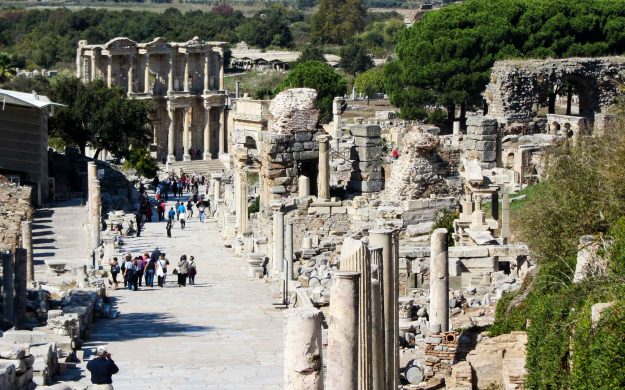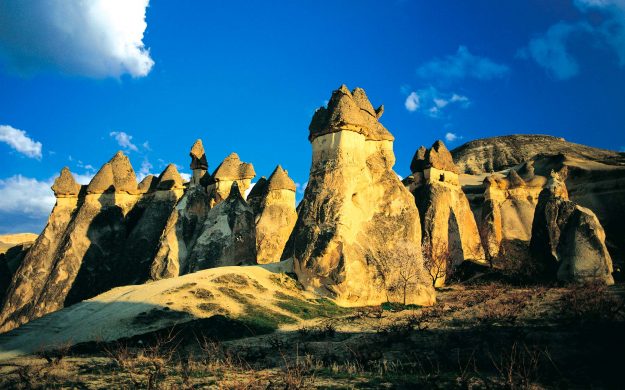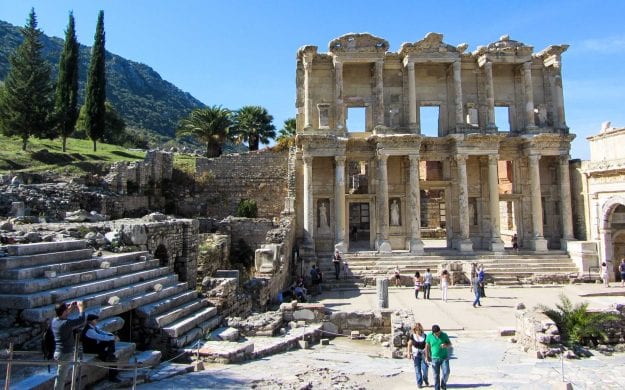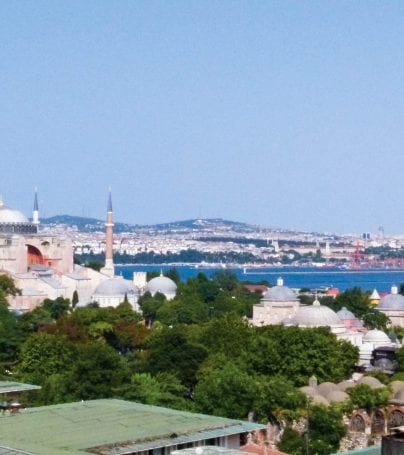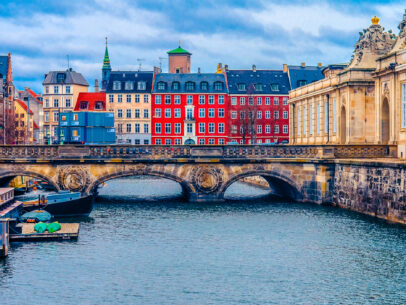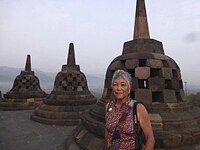Ephesus Adventure Tours
Ephesus was an ancient Greek city, and later a major Roman city, on the west coast of Asia Minor, near present-day Selçuk, Izmir Province, Turkey. It was one of the twelve cities of the Ionian League during the Classical Greek era. In the Roman period, it was for many years the second largest city of the Roman Empire, ranking behind Rome, the empire’s capital. Ephesus had a population of more than 250,000 in the 1st century BC, which also made it the second largest city in the world. The city was famed for the Temple of Artemis (completed around 550 BC), one of the Seven Wonders of the Ancient World. The temple was destroyed in 401 AD by a mob led by St. John Chrysostom. Emperor Constantine I rebuilt much of the city and erected new public baths. The town was again partially destroyed by an earthquake in 614 AD. The city’s importance as a commercial center declined as the harbor was slowly silted up by the Cayster River. Ephesus was one of the seven churches of Asia that are cited in the Book of Revelation. The Gospel of John may have been written here. It is also the site of a large gladiators’ graveyard. Today’s archaeological site lies 3 kilometers southwest of the town of Selçuk, in the Selçuk district of İzmir Province, Turkey. The ruins of Ephesus are a favorite international and local tourist attraction, partly owing to their easy access from Adnan Menderes Airport and via the port of Kuşadası.
Main Sites
Ephesus contains the largest collection of Roman ruins in the eastern Mediterranean. Only an estimated 15% has been excavated. The ruins that are visible give some idea of the city’s original splendor, and the names associated with the ruins are evocative of its former life. The theater dominates the view down Harbour Street, which leads to the silted-up harbor.
The Library of Celsus, the façade of which has been carefully reconstructed from all original pieces, was built ca. 125 AD by Gaius Julius Aquila in memory of his father and once held nearly 12,000 scrolls. Designed with an exaggerated entrance — so as to enhance its perceived size, speculate many historians — the building faces east so that the reading rooms could make best use of the morning light.
A part of the site, Basilica of St. John was built in the 6th century AD, under emperor Justinian I over the supposed site of the apostle’s tomb. It is now surrounded by Selçuk.
The Temple of Artemis, one of the Seven Wonders of the Ancient World, is represented only by one inconspicuous column, revealed during an archaeological excavation by the British Museum in the 1870s. Some fragments of the frieze (which are insufficient to suggest the form of the original) and other small finds were removed – some to London and some to the Archaeological Museum, Istanbul.
The Odeon was a small roofed theater constructed by Vedius Antonius and his wife around 150 AD. It was a small salon for plays and concerts, seating about 1,500 people. There were 22 stairs in the theater. The upper part of the theater was decorated with red granite pillars in the Corinthian style. The entrances were at both sides of the stage and reached by a few steps.
The Temple of Hadrian dates from the 2nd century but underwent repairs in the 4th century and has been reerected from the surviving architectural fragments. The reliefs in the upper sections are casts, the originals being now exhibited in the Selçuk Archaeological Museum. A number of figures are depicted in the reliefs, including the emperor Theodosius I with his wife and eldest son. The temple was depicted on the reverse of the Turkish 20 million lira banknote of 2001-2005 and of the 20 new lira banknote of 2005-2009.
The Temple of Domitian was one of the largest temples on the city. It was erected on a pseudodipteral plan with 8 x 13 columns. The temple and its statue are some of the few remains connected with Domitian.
At an estimated 44,000 seating capacity, the Theater is believed to be the largest outdoor theater in the ancient world.
The Tomb/Fountain of Pollio was erected in 97 AD in honor of C. Sextilius Pollio, who constructed the Marnas aqueduct, by Offilius Proculus. It has a concave facade.
There were two agoras, one for commercial and one for state business.
Ephesus and Christianity
Ephesus was an important center for early Christianity from the AD 50s. From AD 52-54, Paul lived in Ephesus, working with the congregation and apparently organizing missionary activity into the hinterlands. He became embroiled in a dispute with artisans, whose livelihood depended on selling the statuettes of Artemis in the Temple of Artemis (Acts 19:23–41). He wrote between 53 and 57 AD the letter 1 Corinthians from Ephesus (possibly from the “Paul tower” close to the harbor, where he was imprisoned for a short time). Later Paul wrote the Epistle to Ephesians while he was in prison in Rome (around 62 AD).
Roman Asia was associated with John, one of the chief apostles, and the Gospel of John might have been written in Ephesus, c 90-100.[26] Ephesus was one of the seven cities addressed in Revelation (2:1–7), indicating that the church at Ephesus was strong.
Two decades later, the church at Ephesus was still important enough to be addressed by a letter written by Bishop Ignatius of Antioch to the Ephesians in the early 2nd century AD, that begins with, “Ignatius, who is also called Theophorus, to the Church which is at Ephesus, in Asia, deservedly most happy, being blessed in the greatness and fullness of God the Father, and predestinated before the beginning of time, that it should be always for an enduring and unchangeable glory” (Letter to the Ephesians). The church at Ephesus had given their support for Ignatius, who was taken to Rome for execution.
The house of the Virgin Mary, about 7 km (4 mi) from Selçuk, is believed to have been the last home of Mary, mother of Jesus. It is a popular place of pilgrimage which has been visited by three recent popes.
The Church of Mary close to the harbor of Ephesus was the setting for the Third Ecumenical Council in 431, which resulted in the condemnation of Nestorius. A Second Council of Ephesus was held in 449, but its controversial acts were never approved by the Catholics. It came to be called the Robber Council of Ephesus or Robber Synod of Latrocinium by its opponents.
Customize Your Dream Adventure
We are here to help craft tailor-made adventures for individuals, couples, families, and groups of explorers.

